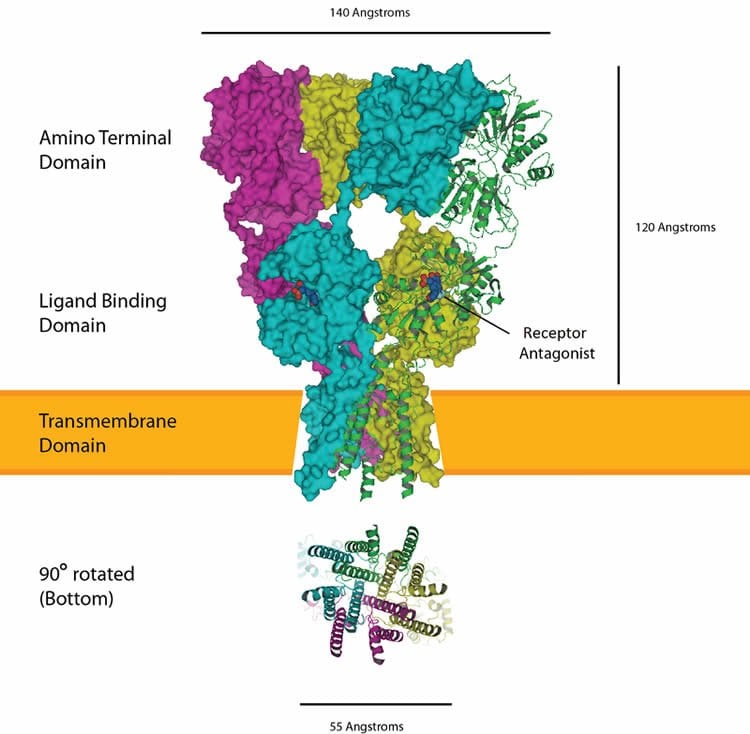Vital clues about how the brain erases long term memories have been uncovered by researchers.
The study in rats reveals how forgetting can be the result of an active deletion process rather than a failure to remember.
It points towards new ways of tackling memory loss associated with conditions such as Alzheimer’s disease and other types of dementia.
The findings could also help scientists to understand why some unwanted memories are so long-lasting – such as those of people suffering from post-traumatic stress disorders.
Memories are maintained by chemical signalling between brain cells that relies on specialised receptors called AMPA receptors. The more AMPA receptors there are on the surface where brain cells connect, the stronger the memory.

The team led by the University of Edinburgh found that the process of actively wiping memories happens when brain cells remove AMPA receptors from the connections between brain cells.
Over time, if the memory is not recalled, the AMPA receptors may fall in number and the memory is gradually erased.
The researchers also showed that actively forgetting information in this way helps the animals to adapt their behaviour according to their surroundings.
Blocking the removal of AMPA receptors with a drug that keeps them at the surface of the cell stopped the natural forgetting of memories, the study found.
Drugs that target AMPA receptor removal are already being investigated as potential therapies to prevent memory loss associated with diseases such as Alzheimer’s and dementia.
However, researchers say that active forgetting could be an important facet of learning and memory. Further research is needed to understand what consequences blocking this process could have on the ability to take on new information and retrieve existing memories.
Dr Oliver Hardt, of the Centre for Cognitive and Neural Systems at the University of Edinburgh, said: “Our study looks at the biological processes that happen in the brain when we forget something. The next step is to work out why some memories survive whilst others are erased. If we can understand how these memories are protected, it could one-day lead to new therapies that stop or slow pathological memory loss.”
Source: Jen Middleton – Universitry of Edinburgh
Image Source: The image is credited to Curtis Neveu and is licensed CC BY SA 3.0.
Original Research: Abstract for “Blocking Synaptic Removal of GluA2-Containing AMPA Receptors Prevents the Natural Forgetting of Long-Term Memories” by Paola Virginia Migues, Lidong Liu, Georgina E. B. Archbold, Einar Ö. Einarsson, Jacinda Wong, Kyra Bonasia, Seung Hyun Ko, Yu Tian Wang, and Oliver Hardt in Journal of Neuroscience. Published online March 23 2016 doi:10.1523/JNEUROSCI.3333-15.2016
Abstract
Blocking Synaptic Removal of GluA2-Containing AMPA Receptors Prevents the Natural Forgetting of Long-Term Memories
The neurobiological processes underpinning the natural forgetting of long-term memories are poorly understood. Based on the critical role of GluA2-containing AMPA receptors (GluA2/AMPARs) in long-term memory persistence, we tested in rats whether their synaptic removal underpins time-dependent memory loss. We found that blocking GluA2/AMPAR removal with the interference peptides GluA23Y or G2CT in the dorsal hippocampus during a memory retention interval prevented the normal forgetting of established, long-term object location memories, but did not affect their acquisition. The same intervention also preserved associative memories of food-reward conditioned place preference that would otherwise be lost over time. We then explored whether this forgetting process could play a part in behavioral phenomena involving time-dependent memory change. We found that infusing GluA23Y into the dorsal hippocampus during a 2 week retention interval blocked generalization of contextual fear expression, whereas infusing it into the infralimbic cortex after extinction of auditory fear prevented spontaneous recovery of the conditioned response. Exploring possible physiological mechanisms that could be involved in this form of memory decay, we found that bath application of GluA23Y prevented depotentiation, but not induction of long-term potentiation, in a hippocampal slice preparation. Together, these findings suggest that a decay-like forgetting process that involves the synaptic removal of GluA2/AMPARs erases consolidated long-term memories in the hippocampus and other brain structures over time. This well regulated forgetting process may critically contribute to establishing adaptive behavior, whereas its dysregulation could promote the decline of memory and cognition in neuropathological disorders.
SIGNIFICANCE STATEMENT The neurobiological mechanisms involved in the natural forgetting of long-term memory and its possible functions are not fully understood. Based on our previous work describing the role of GluA2-containing AMPA receptors in memory maintenance, here, we tested their role in forgetting of long-term memory. We found that blocking their synaptic removal after long-term memory formation extended the natural lifetime of several forms of memory. In the hippocampus, it preserved spatial memories and inhibited contextual fear generalization; in the infralimbic cortex, it blocked the spontaneous recovery of extinguished fear. These findings suggest that a constitutive decay-like forgetting process erases long-term memories over time, which, depending on the memory removed, may critically contribute to developing adaptive behavioral responses.
“Blocking Synaptic Removal of GluA2-Containing AMPA Receptors Prevents the Natural Forgetting of Long-Term Memories” by Paola Virginia Migues, Lidong Liu, Georgina E. B. Archbold, Einar Ö. Einarsson, Jacinda Wong, Kyra Bonasia, Seung Hyun Ko, Yu Tian Wang, and Oliver Hardt in Journal of Neuroscience. Published online March 23 2016 doi:10.1523/JNEUROSCI.3333-15.2016







